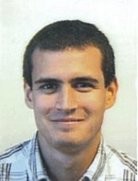 In this PhD project two different platforms were studied: Al2O3 and KRE(WO4)2 for the design, fabrication and characterization of erbium-doped waveguides.
In this PhD project two different platforms were studied: Al2O3 and KRE(WO4)2 for the design, fabrication and characterization of erbium-doped waveguides.
‘When an erbium ion interacts with light, it “stores” the energy from the light wave,’ Sergio Andres Vázquez-Córdova explains. ‘Then you could trigger the release of energy from the ion with another light wave while it relaxes back to a lower energy state. The triggering light wave gets amplified in the process.’
Optical characterisation techniques and measurements performed in erbium-doped channel waveguides, were introduced in this PhD work. Then the fabrication and design of the channel waveguides in both platforms were presented.
‘For aluminium oxide, I chose a spiral-shaped waveguide,’ Sergio says. ‘This allowed me to obtain higher total gain while keeping the losses low. Using the infrared camera, I could see the intensity of light propagating through the channel. Gain measurements were performed, and gain saturation was observed (at various pump and signal power conditions). The temperature dependence on gain was also measured experimentally. The results were compared to theoretical models.’
Then, the spectroscopy and gain performance of erbium-doped potassium double tungstate channel waveguides were presented. ‘Whereas aluminium-oxide is amorphous, these waveguides are crystalline and can be grown from a solution,’ Sergio says.
In potassium double tungstate, the light guiding layer cannot be grown in the same way as in aluminium oxide. Here, high quality crystalline layers are obtained by liquid-phase epitaxial growth at high temperatures.
‘This way, one can fabricate very thin layers, less than 100 µm thick,’ Sergio says. ‘However, these are not completely uniform. Post processing is required.’ Short waveguides could be obtained of around one centimetre. The length of these waveguides is ten times shorter than in aluminium oxide.
‘I studied the samples using spectroscopic techniques,’ Sergio says. ‘Hereby, laser pumping to the second excited state has some advantages but also some disadvantages, which I also studied and characterised. Luminescence decays from the first excited state of erbium were studied at different excitation densities for a range of doping concentrations, and for determination of the strength of inter-ionic processes.’
Optical gain
Optical amplification in dielectric materials is a promising quality for ‘glassy’ as well as crystalline materials, for example in next generation sensing chips.
Sergio: ‘An erbium-doped material differs from a laser because of its open characteristics. In a way the amplifier is the heart of the laser. The light is guided in the erbium-doped layers.
‘For future applications, erbium is especially interesting as it is able to change a formerly transparent material (aluminum oxide) into an amplifying material. The light emitted by these erbium ions at 1,5 µm is especially interesting for some key potential applications.’
In this thesis experiments as well as theoretical simulations were performed. ‘The PhD project progressed quite gradually,’ Sergio tells. ‘One of the key moments for me was the publication in Optics Express, demonstrating a net optical gain of 20 dB on silicon.’
Tungstate devices
In fabricating tungstate devices, collaboration with colleagues from the Mesa+ Integrated Optics Group was decisive.
Sergio: ‘Lots of interaction and technical help was needed, especially involving the growth process. I learned extra skills, for example in polishing the samples and in process steps for fabrication. It illustrates the work of a PhD in general: constantly learning new things, working on the edge of one’s comfort zone. This is as much fun as it is frightening at times, which combination leads to rewarding results along the way.’
Post doc
After his PhD Defence, Sergio will be working for some time as a post-doc, cooperating with Dr. Sonia Garcia Blanco, expanding some research of the Optical Sciences Group on this subject further. Also expanding the erbium-doped optical amplifiers towards laser and sensing functionalities will be worked on.
‘This way I can continue learning in this area of research for some time to come,’ Sergio says. ‘After that period of time, I prefer to explore opportunities in industry. The research there will be more applied, which I like. Although the research regime will be more limited and aimed towards fixed goals, I still can keep on learning new things.’
‘Before the PhD project, I worked in a Mexican company in product development (grid-tie and off-grid photovoltaic products) which was application-oriented as well. That job fitted me very well then.’
‘Now I can bring in even more research skills. Also I am now more experienced in collaborating with colleagues from several disciplines and universities. And I discovered that helping colleagues out on one’s own expertise area, is very rewarding. I hope to find these characteristics in my future job.’
